Abstract
A comparison has been made of the weight loss produced by tumour necrosis factor (TNF) (cachectin) with that produced by a restricted food and water intake (pair-fed controls), and by mitozolomide, a drug which in toxic doses induces weight loss with a similar decrease in nutrient and water intake. When administered as two separate injections over a 24 h period (acute administration) TNF produced a dose-related weight reduction that was accompanied by and directly proportional to a decrease in both food and water intake. When administered daily by i.v. injection over a 5-day period (chronic administration) the major weight loss was found to occur during the first 24 h after injection and thereafter the weight of treated mice increased toward that of controls. Acute administration of TNF produced hypoglycaemia that was more severe than observed with either mitozolomide or in pair-fed controls, a reduction in the circulatory level of free fatty acids (FFA) and an increase in plasma triglycerides, while mitozolomide and pair-feeding had no effect on the level of blood glucose or plasma triglycerides. Body composition analysis showed a loss of adipose tissue in TNF-injected and pair-fed animals after both acute and chronic treatment. Acute administration of TNF also induced a decrease in the total body water content of treated animals which was similar to pair-fed controls. It is concluded that the weight loss produced by TNF arises from a combination of semi-starvation and a reduced water intake, and that the effect only occurred with the first administration of TNF.
Full text
PDF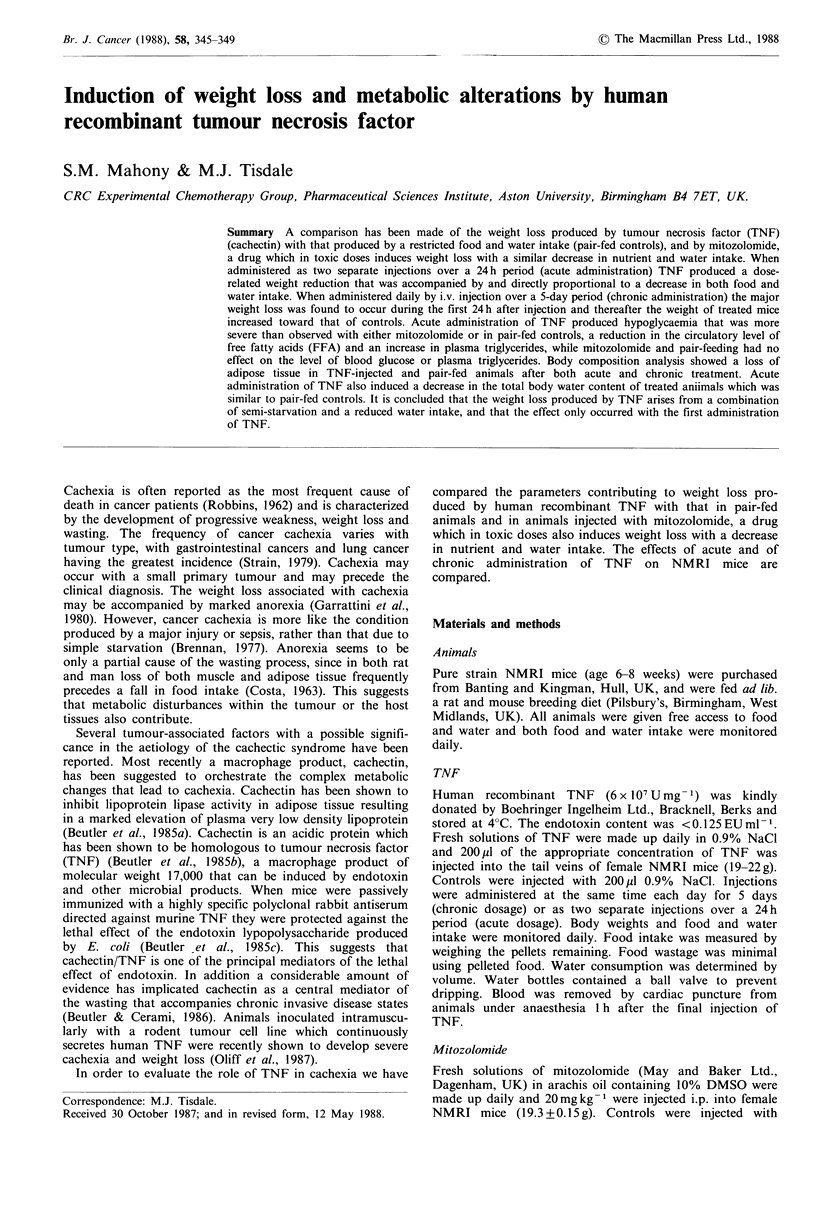
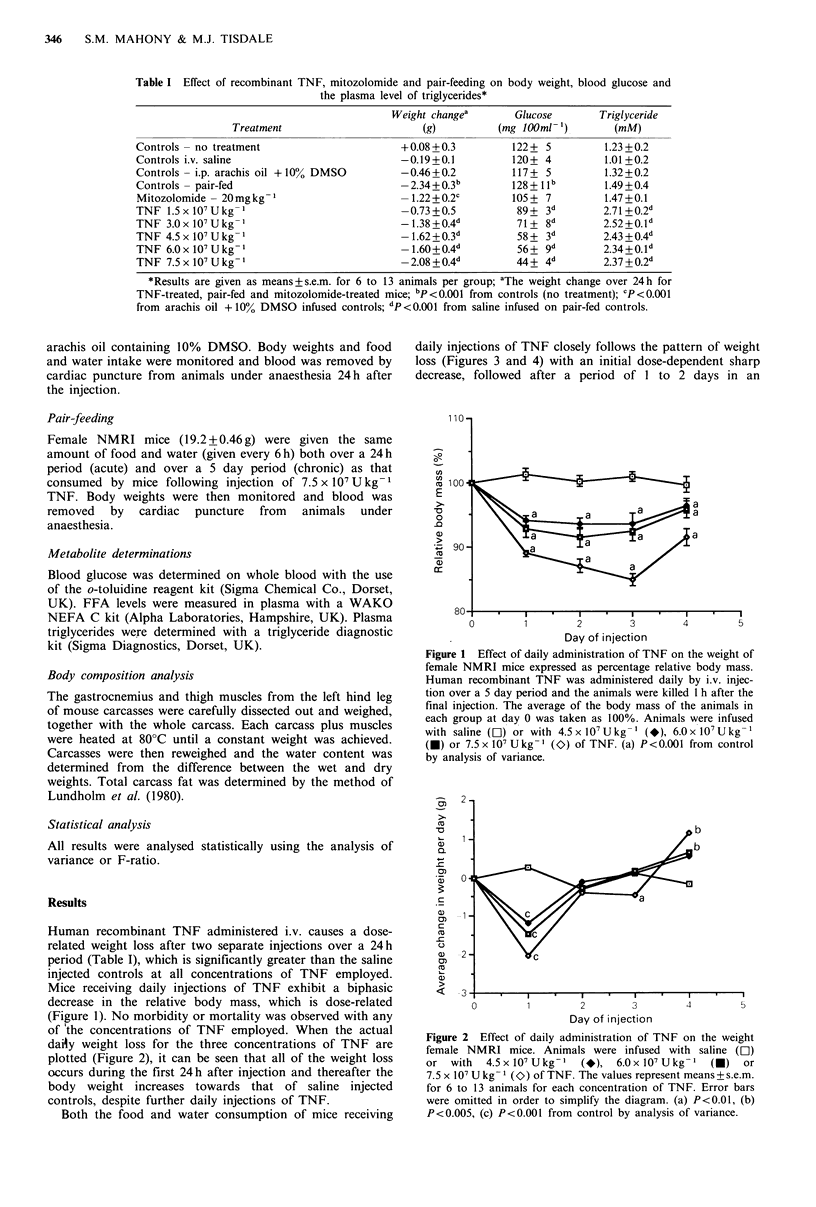
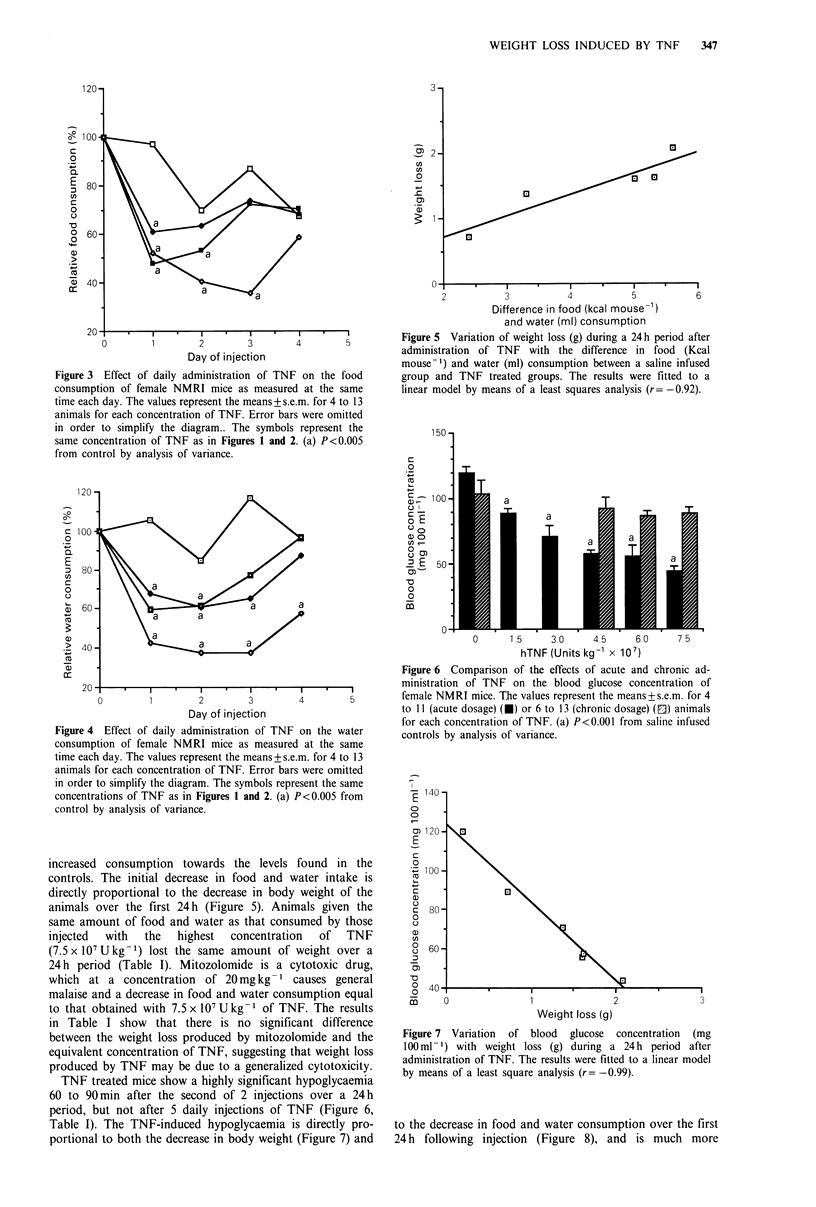
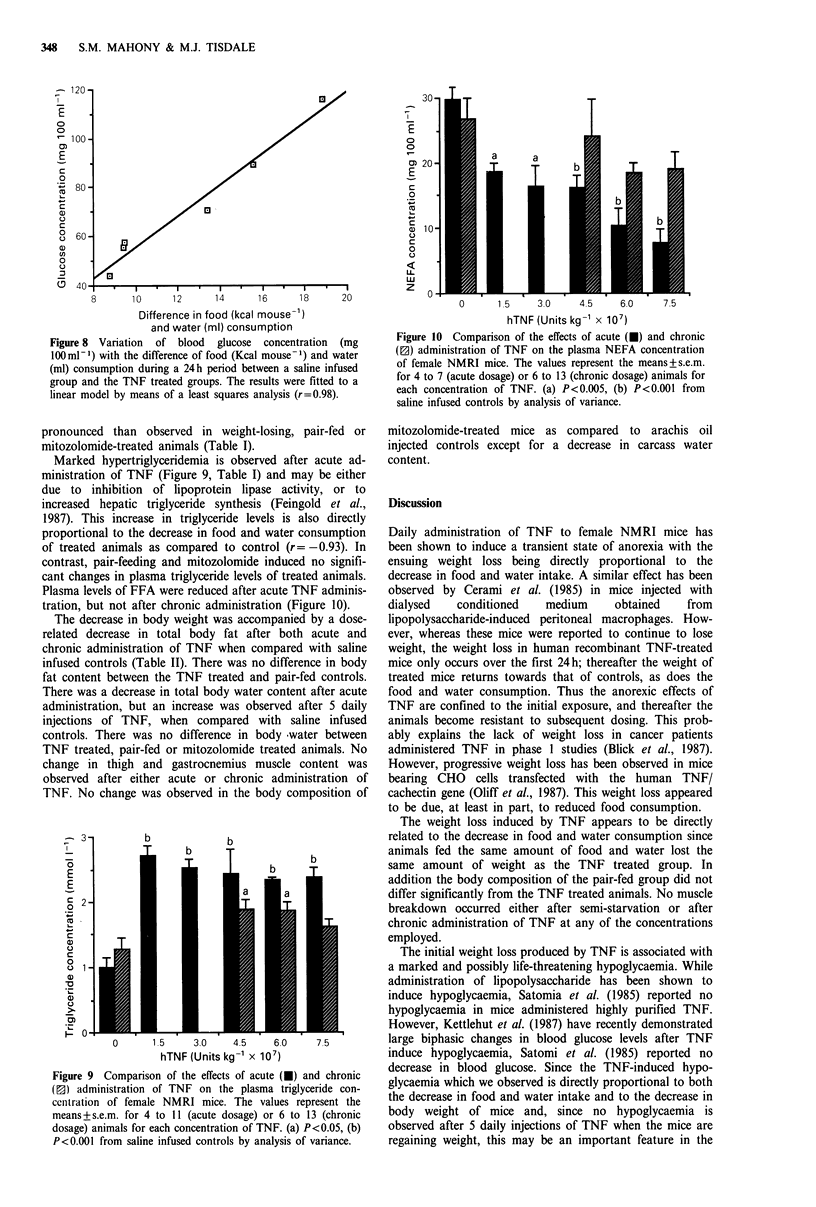
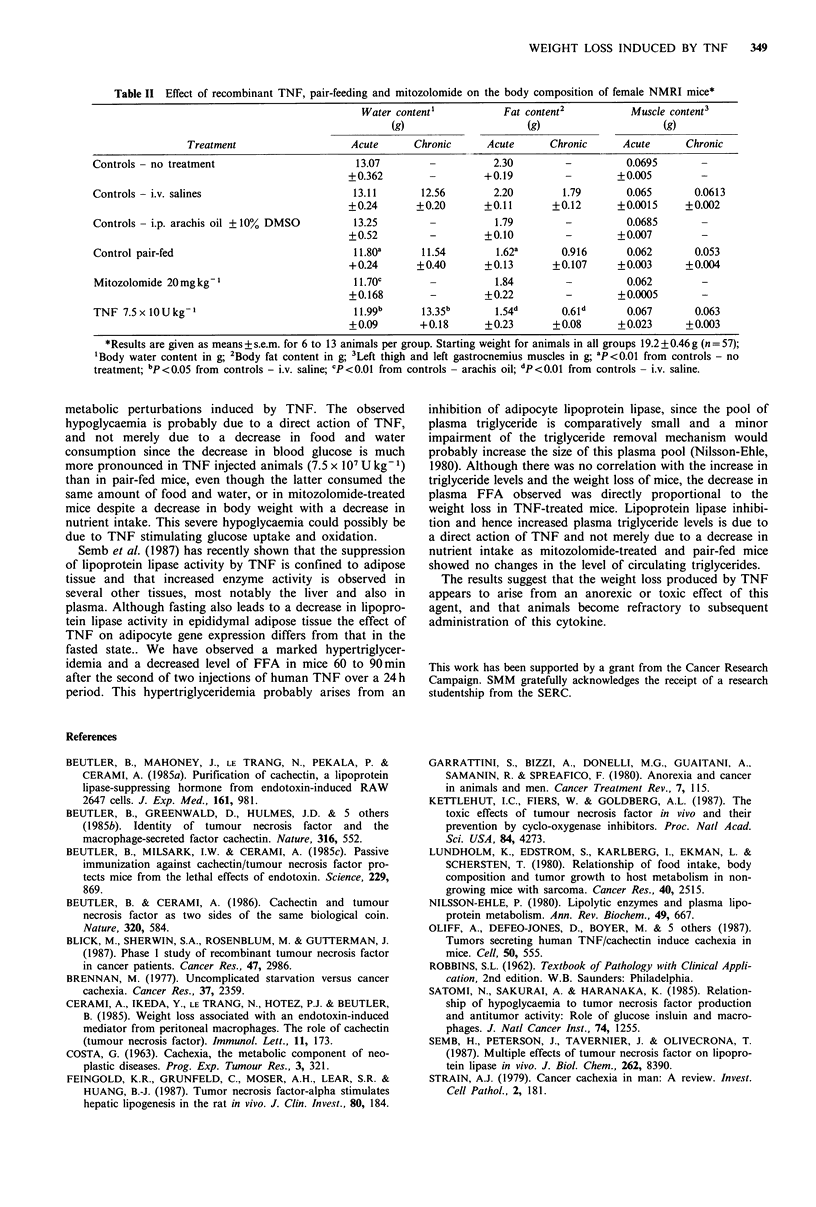
Selected References
These references are in PubMed. This may not be the complete list of references from this article.
- Beutler B., Cerami A. Cachectin and tumour necrosis factor as two sides of the same biological coin. Nature. 1986 Apr 17;320(6063):584–588. doi: 10.1038/320584a0. [DOI] [PubMed] [Google Scholar]
- Beutler B., Greenwald D., Hulmes J. D., Chang M., Pan Y. C., Mathison J., Ulevitch R., Cerami A. Identity of tumour necrosis factor and the macrophage-secreted factor cachectin. Nature. 1985 Aug 8;316(6028):552–554. doi: 10.1038/316552a0. [DOI] [PubMed] [Google Scholar]
- Beutler B., Milsark I. W., Cerami A. C. Passive immunization against cachectin/tumor necrosis factor protects mice from lethal effect of endotoxin. Science. 1985 Aug 30;229(4716):869–871. doi: 10.1126/science.3895437. [DOI] [PubMed] [Google Scholar]
- Blick M., Sherwin S. A., Rosenblum M., Gutterman J. Phase I study of recombinant tumor necrosis factor in cancer patients. Cancer Res. 1987 Jun 1;47(11):2986–2989. [PubMed] [Google Scholar]
- Brennan M. F. Uncomplicated starvation versus cancer cachexia. Cancer Res. 1977 Jul;37(7 Pt 2):2359–2364. [PubMed] [Google Scholar]
- Cerami A., Ikeda Y., Le Trang N., Hotez P. J., Beutler B. Weight loss associated with an endotoxin-induced mediator from peritoneal macrophages: the role of cachectin (tumor necrosis factor). Immunol Lett. 1985;11(3-4):173–177. doi: 10.1016/0165-2478(85)90165-8. [DOI] [PubMed] [Google Scholar]
- Feingold K. R., Grunfeld C. Tumor necrosis factor-alpha stimulates hepatic lipogenesis in the rat in vivo. J Clin Invest. 1987 Jul;80(1):184–190. doi: 10.1172/JCI113046. [DOI] [PMC free article] [PubMed] [Google Scholar]
- Garattini S., Bizzi A., Donelli M. G., Guaitani A., Samanin R., Spreafico F. Anorexia and cancer in animals and man. Cancer Treat Rev. 1980 Sep;7(3):115–139. doi: 10.1016/s0305-7372(80)80027-2. [DOI] [PubMed] [Google Scholar]
- Kettelhut I. C., Fiers W., Goldberg A. L. The toxic effects of tumor necrosis factor in vivo and their prevention by cyclooxygenase inhibitors. Proc Natl Acad Sci U S A. 1987 Jun;84(12):4273–4277. doi: 10.1073/pnas.84.12.4273. [DOI] [PMC free article] [PubMed] [Google Scholar]
- Nilsson-Ehle P., Garfinkel A. S., Schotz M. C. Lipolytic enzymes and plasma lipoprotein metabolism. Annu Rev Biochem. 1980;49:667–693. doi: 10.1146/annurev.bi.49.070180.003315. [DOI] [PubMed] [Google Scholar]
- Oliff A., Defeo-Jones D., Boyer M., Martinez D., Kiefer D., Vuocolo G., Wolfe A., Socher S. H. Tumors secreting human TNF/cachectin induce cachexia in mice. Cell. 1987 Aug 14;50(4):555–563. doi: 10.1016/0092-8674(87)90028-6. [DOI] [PubMed] [Google Scholar]
- Satomi N., Sakurai A., Haranaka K. Relationship of hypoglycemia to tumor necrosis factor production and antitumor activity: role of glucose, insulin, and macrophages. J Natl Cancer Inst. 1985 Jun;74(6):1255–1260. [PubMed] [Google Scholar]
- Semb H., Peterson J., Tavernier J., Olivecrona T. Multiple effects of tumor necrosis factor on lipoprotein lipase in vivo. J Biol Chem. 1987 Jun 15;262(17):8390–8394. [PubMed] [Google Scholar]
- Strain A. J. Cancer cachexia in man: a review. Invest Cell Pathol. 1979 Jul-Sep;2(3):181–193. [PubMed] [Google Scholar]


